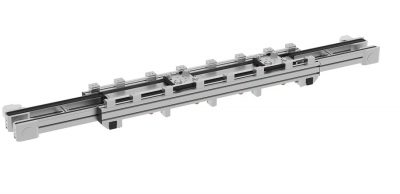Siemens and Festo Collaborate on Linear Motor Drive and Control Concept

Siemens and Festo are presenting an innovative linear motor drive and control concept, designed to offer flexible and efficient high-performance solutions for short-cycle applications. The Multi-Carrier-System (MCS) from Siemens and Festo has been integrated into the Rexroth TS 2plus transfer system, thus adding the modular MCS to Bosch Rexroth's versatile building-block system based on standardized units. The advantages of the existing systems have been merged, and users are free to combine them in almost any way they wish to achieve maximum flexibility in their processes. This opens up new possibilities in assembly technology or in battery production, for example.
The Multi-Carrier-System enables carriers be accelerated, moved and precisely positioned independently of one another on the MCS track. This not only means that different product formats can be manufactured on a single production line, but also that much shorter cycle times and higher production volumes can be achieved within the same time. The carriers travel smoothly from one system to the other, with seamless loading and unloading. They can also be integrated into existing intralogistics systems.
Linear motors from Festo form the technical basis for the Multi-Carrier-System, ensuring free and dynamic movement as well as precise positioning for the direct transport of products weighing up to 50 kilograms. Thanks to holistic engineering from Siemens and the integrated motion control functionality provided by Simotion and Simatic, movement can be controlled precisely and different machine modules can be coordinated within a single system. The Multi-Carrier-System can be seamlessly integrated as part of a digital transformation process – irrespective of the industry or the company size, since kinematic data is already available in a digital format. These data can be directly used to program the controller, for example, resulting in shorter commissioning times.
The Rexroth TS 2plus transfer system is designed for transporting carriers. It comprises standardized building blocks that can be flexibly combined to create a complete system. The modular design enables manufacturers to exploit potential for increased efficiency at a reasonable cost. All of the components feature a particularly rugged design and ensure increased operational stability.





